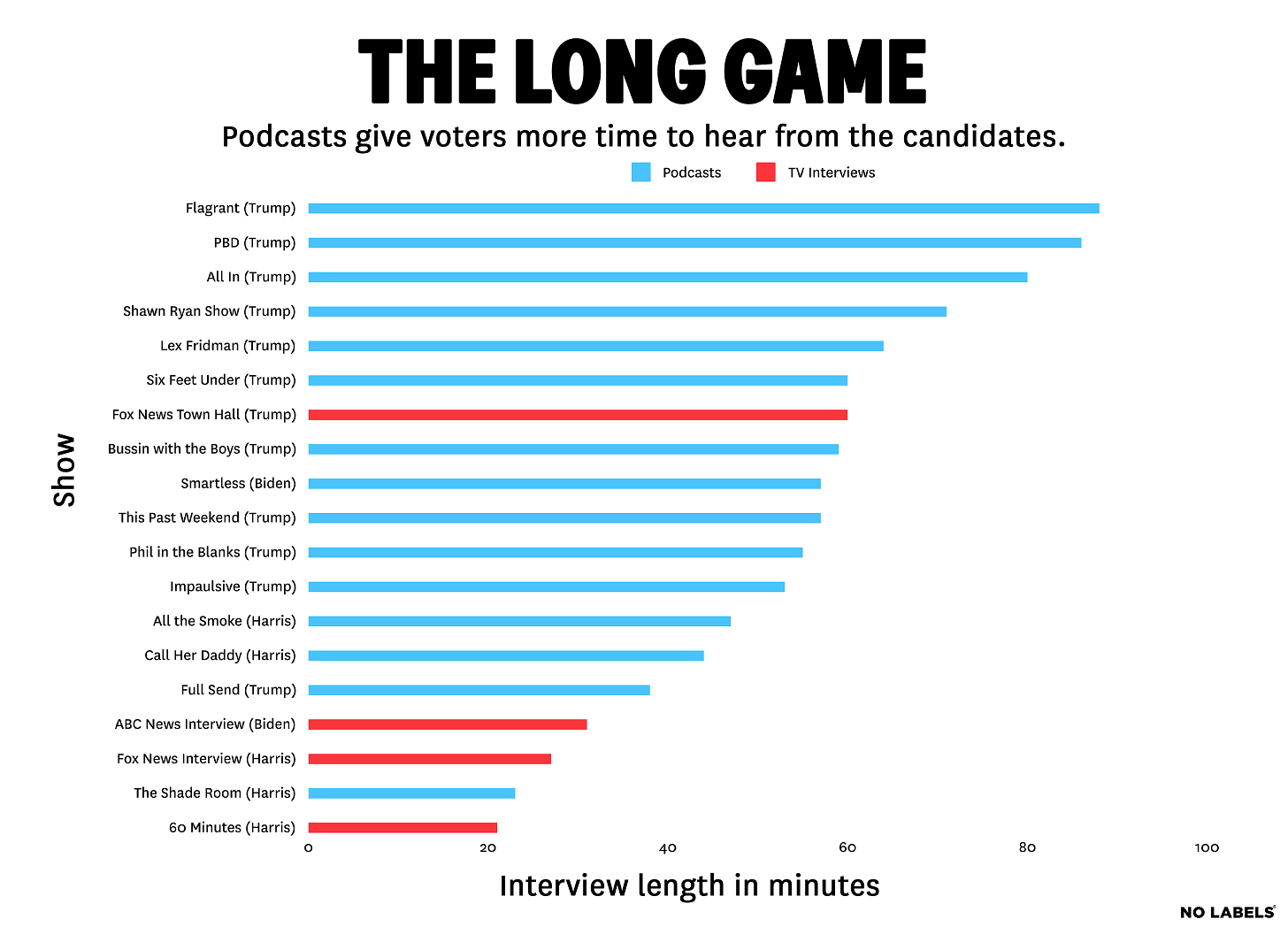The Joe Rogan Experience is easily the biggest podcast in the world, with over 17 million subscribers on YouTube alone. But the lights will be even brighter this week, as Donald Trump is reportedly set to appear on the show this Friday.
Kamala Harris is also reportedly interested in appearing on Rogan, capping off what has been a historic election year for podcasts.
In 2012, Barack Obama made history as the first major-party candidate to appear on a podcast, going on ESPN’s B.S. Report with sportswriter Bill Simmons. Hillary Clinton kept up the trend in 2016, sitting for an interview with Buzzfeed’s Another Round. Clinton even had her own campaign podcast, With Her, which ran for 12 episodes. Joe Biden upped the ante in 2020, appearing on three different podcasts including the influential Pod Save America.
2024 has blown all those previous years out of the water.
So far, Trump has appeared on 12 podcasts—more than all current and previous candidates combined. But this year’s Democratic candidates are holding their own; Harris has gone on three shows, and Biden went on two before dropping out.1
This is smart campaigning.
These podcasts reach millions of people, making them competitive with some of the biggest TV hits. The most-watched candidate podcast, Trump’s appearance on This Past Weekend, garnered over 14 million views on YouTube alone; Spotify and Apple Podcasts don’t report such statistics, but surely it racked up another few million views on those platforms.
Compare that to the candidates’ most-watched TV segment this year, Harris’s interview on Fox News last week. Over 9 million people watched it on TV that day, and it got another 5.8 million views on YouTube. Combined, that’s 14.8 million people—putting it on par with the most-watched podcast appearance.
But the true strength of podcasts isn’t how many viewers they have; it’s who the viewers are. Call Her Daddy, Harris’s marquee podcast appearance, boasts an audience that’s 70% women and 76% under the age of 35—two massively important demographics for the Democratic Party. About 80% of Joe Rogan Experience listeners are men, and a plurality of them are independents or third-party voters who could decide this election.
The podcast campaign is good for voters, too.
Believe it or not, there are still undecided voters out there; not many, but enough to matter in such a close race. What’s more, in a September New York Times/Siena poll, 31% of Harris supporters and 12% of Trump supporters said they needed to know more about the candidates before they could fully commit to voting for them.
The long-form nature of podcasts lets listeners get to know the candidates better. A podcast appearance usually lasts much longer than a TV interview, with the longest one this year running nearly an hour and a half. Here’s how the candidates’ podcast appearances stack up against their most popular TV segments:
Podcasts can also feel more conversational and authentic than the structured, fast-paced nature of TV interviews. The longer format and less scripted atmosphere allow for off-the-cuff answers to questions you wouldn’t hear on CNN or at a campaign rally. With Harris’s late entry into the race and there being only one presidential debate this year, podcasts are helping to fill in the gaps and show voters who the candidates truly are.
The campaigns are adapting to new media and meeting voters where they’re at, and we’re all better off for it.
Measuring podcast appearances is not an exact science; many live radio and TV programs are re-packaged as podcasts later on. In this case, we're only counting content that was published exclusively as a podcast and recorded in 2024 while the candidate was actively running for President.






But then I wonder how many undecided, independent voters really watch, or want to watch the clearly biased (or perceived as biased) Podcasts/Youtubes. Or are some of these Podcasts just preaching to the choir of already converted/committed voters? How many Republicans would watch Call Her Daddy?